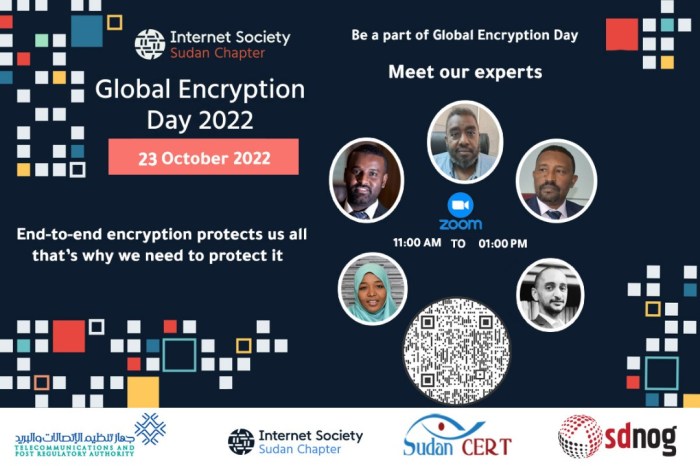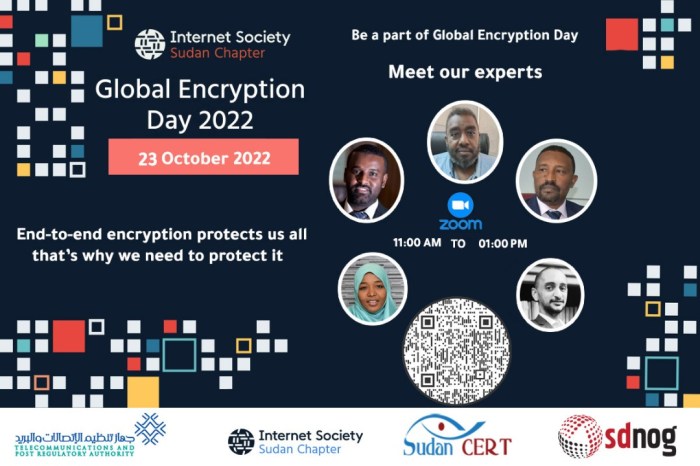
USA wrestles with encryption technology policies, navigating a complex landscape where national security concerns clash with individual privacy rights. From historical precedents to current debates, the evolution of encryption policies reveals a constant tension between safeguarding sensitive information and ensuring law enforcement access to digital data. This multifaceted issue involves intricate legal frameworks, technological advancements, and the perspectives of various stakeholders, including government agencies, tech companies, and civil liberties groups.
The article delves into the historical context, examining key legislation and court cases that have shaped current policies. It analyzes the current state of encryption policies, highlighting ongoing debates about government access to encrypted data. Further, the article explores the impact of encryption on national security and privacy, considering potential trade-offs and contrasting perspectives. International perspectives and future trends are also discussed, including potential technological advancements and emerging challenges.
Historical Context of Encryption Policies
The United States’ approach to encryption technology has been a dynamic and often contentious journey, evolving alongside technological advancements and shifting national security priorities. Early policies often prioritized open communication and free flow of information, but concerns about national security and potential misuse have led to a more complex and nuanced framework. This evolution reflects a constant tension between safeguarding sensitive information and maintaining public access to critical technologies.This exploration delves into the historical trajectory of encryption policies, highlighting key milestones, shifts in administration, and the influence of national security concerns.
It examines the role of court cases and legislative actions in shaping the current landscape, demonstrating how the interplay of legal and political factors has influenced the development of these policies.
Evolution of Encryption Policies Across US Administrations
Different administrations have adopted varying stances on encryption, often reflecting the prevailing national security concerns of the time. The early years saw a more permissive approach, emphasizing the importance of open communication. However, as threats and technologies evolved, a more restrictive approach emerged, focusing on security concerns. This evolution can be clearly traced through legislative actions, court rulings, and executive orders.
Role of National Security Concerns in Shaping Encryption Policies
National security concerns have consistently played a significant role in shaping encryption policies. The perceived need to safeguard classified information and critical infrastructure from potential adversaries has often been a primary driver behind regulations and restrictions. This has led to complex debates regarding the balance between security and individual liberties, particularly concerning the rights to privacy and freedom of communication.
Significant Court Cases and Legislative Actions Impacting Encryption
Several landmark court cases and legislative actions have had a profound impact on encryption policies. These legal battles and legislative actions have set precedents and shaped the current legal framework surrounding encryption.
Key Legislation Impacting Encryption Over Time
The following table illustrates key legislation impacting encryption policies throughout US history.
| Year | Act/Policy | Key Provisions | Impact |
|---|---|---|---|
| 1970s | Early Communication Standards | Standards for data transmission, often with limited focus on encryption. | Established foundational framework for data communication, but did not directly address encryption. |
| 1990s | Communications Act Amendments | Provisions concerning encryption in telecommunications. | Early attempts to regulate encryption in specific sectors, with evolving debate on privacy vs. security. |
| 2001 | USA PATRIOT Act | Expanded government surveillance powers, impacting encryption in several ways. | Significantly increased government access to encrypted communications, prompting strong privacy concerns. |
| 2013 | Edward Snowden Leaks | Exposure of widespread government surveillance programs, highlighting encryption’s vulnerability. | Sparked public debate on the scope of government surveillance and the need for stronger encryption protections. |
| 2018 | Clarification of encryption requirements | Clarified the role of encryption in specific sectors and established guidelines. | Provided a more specific framework for encryption standards in certain contexts. |
Current Encryption Policies and Debates
The United States grapples with a complex interplay of national security concerns and individual privacy rights when it comes to encryption. Recent technological advancements in cryptography have significantly strengthened the security of digital communications, yet this same capability presents a challenge for law enforcement agencies seeking access to encrypted data. This tension has led to ongoing debates and evolving policies, impacting everything from digital communications to financial transactions.The current state of encryption policies in the USA is characterized by a constant tug-of-war between the need to protect sensitive information and the desire for law enforcement to access that information when necessary.
This tension is particularly acute in the digital age, where encryption plays a crucial role in safeguarding user data and communications.
Current Legal Frameworks
Existing legal frameworks, such as the Foreign Intelligence Surveillance Act (FISA) and the Electronic Communications Privacy Act (ECPA), aim to strike a balance between these competing interests. However, these laws often face criticism for their ambiguity and potential for misuse. The application of these laws to new technologies, such as end-to-end encryption, is a continuing area of legal interpretation.
Technological Advancements, Usa wrestles with encryption technology policies
Technological advancements in cryptography have made encryption increasingly sophisticated. End-to-end encryption, for example, protects communications by ensuring only the sender and receiver can access the content, making it extremely difficult for third parties, including governments, to intercept or decipher messages. This development has dramatically altered the landscape of digital privacy and security.
Government Access to Encrypted Data
The debate surrounding government access to encrypted data is highly contentious. Proponents of government access argue that it is crucial for national security, enabling law enforcement to track down criminals and prevent terrorist attacks. Conversely, those advocating for strong encryption protections emphasize the importance of individual privacy and the potential for misuse of such access. The potential for government overreach and the risk of chilling effects on free speech and expression are significant concerns.
Stakeholder Positions on Encryption
| Stakeholder | Position | Rationale | Potential Consequences |
|---|---|---|---|
| Government Agencies (e.g., FBI, NSA) | Limited access to encrypted data | Necessary for national security, fighting crime, and protecting against terrorism. | Potential for hindering investigations, reducing public safety, and creating a less secure society. |
| Tech Companies (e.g., Apple, Google) | Strong encryption standards | Protecting user privacy and preventing unauthorized access to data. | Potential for impeding law enforcement investigations and hindering security efforts. |
| Civil Liberties Groups (e.g., ACLU) | Robust encryption protections | Protecting individual privacy and freedom of expression. | Potential for hindering law enforcement in legitimate investigations and creating security vulnerabilities. |
| Individuals | Balancing encryption with security | Desire for both secure communication and access to law enforcement in emergencies. | Potential for conflicts between privacy and security, difficulty navigating the legal landscape. |
Balancing National Security and Privacy
Various approaches exist to strike a balance between national security concerns and individual privacy rights. Some advocate for government-mandated backdoors in encryption systems, while others support stronger legal protections for encrypted communications. The debate highlights the inherent tension between safeguarding critical infrastructure and ensuring personal freedom in the digital realm. One example of a balancing approach is the use of warrants and court orders for accessing encrypted data, though the specifics and interpretation of these processes continue to be debated.
Another example involves focusing on alternative approaches to achieving national security objectives, without compromising the security and privacy of individuals.
Impact of Encryption on National Security
Encryption, while offering crucial privacy and security for individuals and organizations, presents significant challenges to national security efforts. The ability to protect communications and data from unauthorized access has a complex interplay with the need for law enforcement agencies to investigate crimes and protect national interests. This intricate relationship necessitates careful consideration of the potential benefits and drawbacks of encryption technologies.The fundamental challenge is the tension between safeguarding privacy and enabling investigations.
Strong encryption, designed to protect sensitive information, can inadvertently obstruct the investigation of criminal activity, terrorism, or national security threats. This creates a delicate balance that requires careful consideration and innovative solutions.
Challenges Posed by Encryption to National Security Efforts
Encryption technologies, particularly end-to-end encryption, pose significant hurdles for law enforcement agencies. Without access keys or decryption tools, intercepted communications and data remain indecipherable, hindering investigations into potential crimes and threats. This limitation necessitates a delicate balance between protecting privacy rights and enabling investigations into criminal activity and threats to national security.
How Encryption Can Hinder Law Enforcement Investigations
The use of strong encryption can significantly impede law enforcement investigations. Criminals and terrorists can exploit encryption to conceal their activities, making it difficult for investigators to gather evidence. This is particularly problematic in cases involving cybercrimes, organized crime, and potentially violent extremism, where encryption can create a digital shield that protects malicious actors from scrutiny. For instance, encrypted messaging platforms can be utilized to coordinate illegal activities without leaving traceable digital footprints.
Potential for Encryption to Be Used by Malicious Actors
Encrypted channels can be exploited by malicious actors to facilitate criminal activities, terrorist plots, and other harmful endeavors. The anonymity and security offered by encryption make it a potentially valuable tool for those seeking to evade detection and maintain secrecy. This includes cybercriminals, organized crime syndicates, and extremist groups.
Examples of Situations Where Encryption Has Complicated or Prevented Investigations
Numerous cases illustrate the difficulties encryption presents for law enforcement. For example, in investigations involving online child exploitation or financial fraud, encrypted platforms can make it extremely difficult to gather evidence and prosecute perpetrators. Furthermore, the use of encrypted communication channels by terrorists has made it harder to track their movements and intentions. These examples highlight the complexities of balancing privacy concerns with national security needs.
Table Illustrating Potential Implications of Different Encryption Levels for National Security Operations
| Encryption Level | Investigation Ease | Threat Mitigation | Societal Impact |
|---|---|---|---|
| Low | High | Low | Limited privacy protection |
| Medium | Moderate | Moderate | Balanced privacy and security |
| High | Low | High | Enhanced privacy, but limited investigation |
| End-to-End | Very Low | Very High | Strongest privacy protection, but greatest investigative challenge |
Impact of Encryption on Privacy and Civil Liberties: Usa Wrestles With Encryption Technology Policies

Encryption, while often associated with national security concerns, plays a crucial role in safeguarding user privacy and civil liberties. Its ability to protect sensitive information from unauthorized access is fundamental to maintaining individual autonomy in the digital age. This protection extends beyond personal data, impacting freedom of expression and the ability to organize and communicate without fear of surveillance.Encryption’s multifaceted role in safeguarding privacy is paramount.
The US government’s struggles with encryption policies are definitely a hot topic right now. It’s interesting to see how these debates intersect with other economic trends. For example, Autobytel.com had a surprisingly strong first quarter, as detailed in this report strong first quarter for autobytel com , which begs the question: how will these conflicting priorities ultimately affect the digital landscape and market forces?
Ultimately, these encryption debates will continue to shape the tech industry for the foreseeable future.
By obscuring the content of communications and data storage, encryption creates a barrier against prying eyes, whether from governments, corporations, or malicious actors. This fundamental protection fosters a safe space for individuals to express themselves freely, participate in public discourse, and organize without fear of reprisal.
Encryption and User Privacy
Encryption effectively shields user data from unauthorized access. By converting readable information into an unreadable format, encryption creates a robust barrier against surveillance and data breaches. This protection extends to personal communications, financial transactions, and health records, ensuring confidentiality and preventing misuse. Robust encryption standards and protocols, like end-to-end encryption, ensure that only authorized parties can access the encrypted data.
Potential for Misuse of Encryption
While encryption is a powerful tool for protecting privacy, its very nature can be exploited for malicious purposes. Criminals can leverage encryption to conceal illicit activities, such as money laundering, drug trafficking, or the distribution of child pornography. Law enforcement agencies face significant challenges in decrypting such encrypted communications, posing a dilemma in balancing privacy rights with national security concerns.
Encryption and Surveillance Protection
Encryption acts as a powerful shield against unwarranted surveillance. By rendering data unreadable to unauthorized entities, encryption protects individuals from governmental or corporate monitoring. This protection is particularly important in countries where freedom of expression is restricted, and citizens are at risk of censorship or repression. Examples include journalists communicating sensitive information, activists organizing protests, and dissidents expressing their views.
These examples highlight how encryption safeguards essential freedoms in the face of potential surveillance.
Trade-offs Between National Security and Privacy
| Encryption Level | Privacy Protection | Security Risk | Public Perception |
|---|---|---|---|
| Low (no encryption) | Low | High (vulnerable to eavesdropping) | Neutral (lack of privacy awareness) |
| Moderate (basic encryption) | Moderate | Moderate (some protection, but not robust) | Mixed (some awareness of privacy needs) |
| High (strong encryption) | High | Low (robust protection against unauthorized access) | Mixed (concerns about potential misuse by criminals) |
| Very High (advanced encryption) | Very High | Very High (difficulty in decrypting for law enforcement) | Negative (concerns about security risks, potentially hindering investigations) |
Societal Implications of Encryption Policies
Encryption policies have significant societal implications, impacting various aspects of life. Stricter encryption policies, for example, may hinder law enforcement investigations but bolster individual privacy and freedom. Conversely, more lenient policies might facilitate investigations but risk exposing individuals to unwarranted surveillance. These policies can have implications for freedom of expression, online activism, and the overall security and safety of citizens.
The balance between these competing interests is a complex issue with no simple solution. Public discourse and a thorough understanding of these implications are vital for shaping appropriate policies.
International Perspectives on Encryption

Navigating the global landscape of encryption policy requires understanding the diverse approaches taken by nations worldwide. The US, with its own unique security and privacy concerns, must consider how its policies interact with those of other countries. This interaction, while potentially fraught with challenges, also presents opportunities for international cooperation and the development of more effective, globally-consistent solutions.The global arena of encryption policy is complex and multifaceted, reflecting the diverse geopolitical priorities and national security interests of various nations.
The US is grappling with tricky encryption policies, trying to balance security and privacy. This struggle is reminiscent of the recent acquisition of MightyMail by Xoom, which is a bit like a tech giant gobbling up smaller players. Xoom com gobbles up mightymail highlights the constant reshaping of the digital landscape. Ultimately, these kinds of mergers and evolving policies raise questions about data security and user control in the ever-changing digital environment.
A comparison of US encryption policies with those of other countries reveals a spectrum of approaches, ranging from stringent controls to greater emphasis on user privacy.
The US is grappling with tough decisions regarding encryption policies, trying to balance security and privacy. Meanwhile, interesting developments in the tech world continue. For example, a recent acquisition, onechannel signs egghead com, onechannel signs egghead com , might offer some insights into how companies are approaching digital learning solutions. Ultimately, these complex encryption debates will continue to shape the future of online security.
Comparison of US Encryption Policies with Other Nations
Different countries have adopted varying stances on encryption, reflecting differing national priorities. For instance, some nations prioritize national security, leading to regulations that mandate backdoors into encrypted communications. Conversely, other countries prioritize user privacy, opting for policies that prioritize user rights and freedoms. This divergence in approach leads to a complex interplay of interests and potential conflicts.
The US approach often sits in the middle, balancing security and privacy concerns.
Role of International Cooperation in Addressing Encryption Challenges
International cooperation is crucial in tackling the complexities of encryption. Harmonization of encryption policies across borders is vital for effective communication and trade. Collaborative efforts to establish global standards for encryption and secure communication networks can mitigate risks and promote mutual trust. This involves open dialogue and shared best practices to avoid unintended consequences of divergent national policies.
Global Trends and Challenges in Regulating Encryption
Several trends characterize the global regulatory landscape of encryption. One trend is the increasing sophistication of encryption technology, which necessitates continuous adaptation of regulations. Another trend is the growing recognition of the importance of user privacy, with some countries implementing stronger protections for personal data. This evolving landscape of encryption technology and policy presents challenges for governments worldwide in balancing security needs with user rights.
Timeline of Significant International Events Related to Encryption
| Year | Event | Key Actors | Global Impact |
|---|---|---|---|
| 2014 | Snowden Leaks | Edward Snowden, US Government, various intelligence agencies | Exposed extensive US surveillance programs, prompting global debate about privacy and security tradeoffs. |
| 2016 | EU General Data Protection Regulation (GDPR) | European Union | Strengthened data protection rights for EU citizens, influencing global privacy regulations. |
| 2020 | Rise of 5G | Global telecom companies, governments | Increased concerns about security vulnerabilities in new communication infrastructure and its impact on encryption protocols. |
| 2023 | International Forum on Encryption Standards | Representatives from various countries | Initiated discussions to create a globally accepted framework for encryption technology. |
Potential Implications of International Differences in Encryption Policies for US Interests
Disparities in encryption policies between the US and other nations can have significant implications for US interests. For instance, differences in standards could hinder international cooperation in law enforcement or intelligence sharing. Conversely, divergent approaches might affect US business operations and the flow of data across borders. The US needs to proactively engage with international partners to mitigate these risks and promote policies that foster global trust and cooperation.
Future of Encryption Policies
The future of encryption policies is inextricably linked to the ongoing evolution of encryption technology itself. Predicting precise future developments is challenging, but examining current trends and potential advancements provides valuable insight into likely policy directions. This exploration considers potential technological advancements, emerging legal and ethical challenges, and the critical role of public awareness in shaping the future landscape.
Future Trends in Encryption Technology
The relentless pace of technological advancement promises significant developments in encryption techniques. Quantum computing, though still in its nascent stages, represents a substantial threat to current public-key cryptography. Researchers are actively exploring post-quantum cryptography (PQC) algorithms to counter this potential vulnerability. These new algorithms will likely become increasingly important in the future, influencing the design and implementation of encryption systems.
Moreover, advancements in hardware, such as specialized chips designed for encryption, are poised to increase encryption speeds and efficiency, impacting both security and practical applications. Furthermore, advancements in machine learning and artificial intelligence may lead to novel encryption methods, potentially improving security and resilience.
Potential Technological Advancements Impacting Encryption Policies
Several technological advancements have the potential to reshape encryption policies. Quantum computing, capable of breaking current encryption standards, necessitates the development of post-quantum cryptography. This transition requires significant investment in research, development, and standardization, which will influence policy decisions regarding the adoption and implementation of new cryptographic algorithms. The increasing sophistication of hardware and software will impact the feasibility and efficiency of encryption, potentially leading to policy changes concerning standards, certifications, and the implementation of robust security protocols.
Emerging Legal and Ethical Challenges
The widespread adoption of encryption raises complex legal and ethical challenges. Jurisdictional disputes regarding encryption access are likely to become more pronounced. The question of government access to encrypted communications will continue to be a contentious issue. Balancing national security concerns with individual privacy rights remains a crucial challenge, necessitating careful consideration of ethical frameworks and legal precedents.
Furthermore, the development of increasingly sophisticated encryption methods may lead to a proliferation of tools used for illicit activities, such as cybercrime and terrorism. This presents a crucial ethical dilemma for policymakers and law enforcement agencies.
Potential Scenarios for the Future of Encryption Policy
| Scenario | Key Developments | Potential Impacts | Mitigation Strategies |
|---|---|---|---|
| Scenario 1: Quantum-Resistant Cryptography Dominates | Widespread adoption of post-quantum cryptography standards. | Improved security against quantum attacks, but potential for compatibility issues and increased costs for some systems. | Promoting interoperability standards, supporting research in PQC, and ensuring that transition plans are in place. |
| Scenario 2: Increased Government Access to Encrypted Data | Weakening of encryption standards or development of backdoors for government access. | Potentially enhanced national security, but significant risks to individual privacy and civil liberties. | Strengthening data protection regulations, implementing robust oversight mechanisms, and fostering public debate on the balance between security and privacy. |
| Scenario 3: Rise of Decentralized Encryption Systems | Increased use of blockchain technology and distributed ledger systems for encryption. | Enhanced security and privacy, but potential challenges in regulation and enforcement. | Developing clear legal frameworks for decentralized systems, fostering international cooperation, and ensuring transparency in the design and operation of these systems. |
| Scenario 4: Encryption as a Tool for Illicit Activities Flourishes | Encryption technologies are widely used to facilitate criminal activity and terrorism. | Weakening of law enforcement capabilities, increased cybercrime, and a rise in online threats. | Strengthening international cooperation in law enforcement, developing advanced forensic tools for decrypting encrypted data, and investing in public awareness campaigns about responsible encryption use. |
Role of Public Awareness and Engagement
Public awareness and engagement are crucial for shaping future encryption policies. Informed citizens can participate in discussions about the ethical implications of encryption, and they can hold policymakers accountable. Open dialogue about the trade-offs between security and privacy is essential. Public forums, educational initiatives, and community engagement are key to fostering a well-informed populace capable of participating in shaping the future of encryption policies.
End of Discussion
In conclusion, the USA’s struggle with encryption policies reflects a broader global challenge. Balancing national security needs with individual rights remains a crucial issue, demanding careful consideration of the implications of different approaches. As encryption technology continues to evolve, ongoing dialogue and adaptation are essential to address the complex interplay between security, privacy, and technological advancement.






